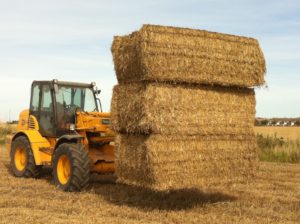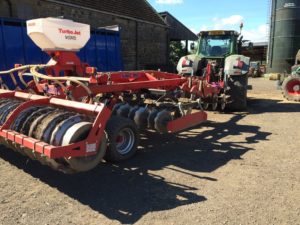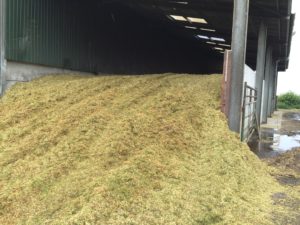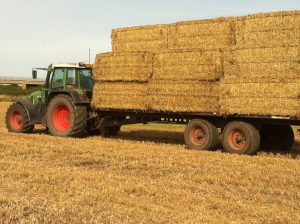Down on the Farm This August
We are well into harvest now, although it has but a bit of a stop-start affair so far. Generally, we cut winter barley first, followed by oilseed rape and then winter wheat. Not this year though – having sprayed off the oilseed rape to get it to ripen and dry a bit earlier the weather turned and we ended up behind with the barley. So in spite of trying to forward plan we still ended up with both crops needing to be cut at the same time. Fortunately, we managed to get some long days in and got through without too much loss. Rape seed is very fine and when it’s ripe, any heavy rain shakes and splits the pods and the seeds drop out onto the ground. Not only do you lose some of the yield but it then self seeds amongst the following years crop – luckily, we got most of it safely in before the heaviest rain. We haven’t had to do much drying this year so far – so the yard has been a bit quitter than normal at this time of year – the dryer fans do cause a racket to be fair.
We are now at the stage of having to both harvest crop and also start preparing land for planting next years crop. It’s a lot faster than it used to be with some of the big machinery we now have. The first thing we need to do is get the straw off the fields – the big square baler we have can cover the ground pretty fast and with the large high density bales its also faster to lift and load them onto the trailers and get them stacked back at the yard. Handling the thousands of little bales we used to do when I was a kid is fortunately now long gone apart from some hay which is baled for the horses. You always knew when you were stacking small bales as your hands were raw and the knees got worn out of your jeans as you hefted them up onto the trailer. Now we just sit in the loader and let the hydraulics do all the work

To speed things up we also do as much direct cultivation with discs and tines and only plough where we need to. Ploughing is great for incorporating long stubbles or to help control weeds etc but it is a relatively slow process and the ploughed land still needs to be cultivated again to prepare the seedbed. Big heavy multirow discs with cultivator tines and rollers can also direct drill rapeseed into the stubble from the previous crop as long as ground conditions are right. The machine in the picture allows us to do that where its sensible.

The livestock side is fairly quiet at this time of year apart from keeping on top of lamb and cattle growth so we select them at the optimum weight and condition. The lambs are rotated around onto fresh grass where its possible so that we can maximise growth rates with high quality summer grass that’s available. We’ve also been preparing feed for next winter – the grass silage was all done earlier but we have cut some fields of wheat before they are fully ripe – this is called “whole cropping”. It’s not something we do every year but Basically, we cut and chop the entire head and stem and then its put into a silage pit and sealed so that it ferments. The acid produced preserves the crop until we need to use it for winter feed. It gives us a great high protein feed to help balance out the grass silage for the cattle. An added benefit is that it allows us to get ahead with autumn sowing as the fields are available earlier than they would be if we let the crop ripen and harvested as normal


